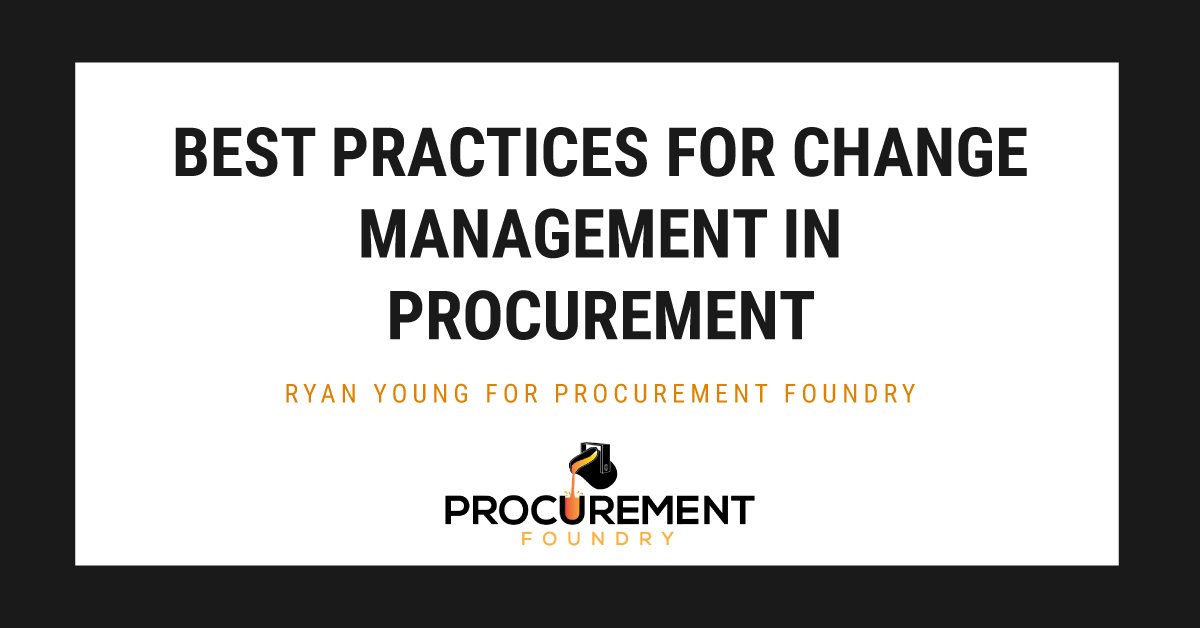Maximizing Savings Opportunities and Procurement's Strategic Value for CPOs
Saving money is not always about pinching pennies: advanced and data-driven insights enable you to identify real cost-saving opportunities, negotiate...

Organizations don’t change overnight. Change management in procurement is particularly challenging.
In recent years, digital transformation has accelerated the rate of change and made it more frequent. However, 70% of those change programs don’t stick or reach their stated goal even under normal circumstances because of:
To help you adapt quickly to the ever-changing needs of the market and your customers, you’ll need a solid change management strategy. It’ll also help you plan for, coordinate, and implement change successfully.
Here’s an overview of what change management is, and the key steps procurement teams should take to be more effective in their function.
Change management is a process of adapting your organization’s way of doing things to roll out major changes smoothly without undue drama.
The change could be a micro/internal one – such as new leadership or a new mission – or an external/macro change in the political, cultural, social, technological, or economic environment.
In addition, the change could be radical and requires an immediate/urgent response or something gradual that needs a structured, gradual, and long-term approach.
When introducing and managing change in your organization, you’ll integrate or retire legacy systems while adopting emerging technologies and migrating apps into the cloud.
With so many failed initiatives each year, it’s crucial to have a proper approach to change management in procurement, which involves:
There are several stakeholders who include: upper management, champions of the process, and those charged with implementing the change.
All these stakeholders have different experiences and expectations, so you must get a high level of buy-in to establish a successful change process or transformation.
One of the ways to do this is by building a robust and actionable business case that justifies the change project by showing the tangible value of change, and its competitive advantage.
The business case also serves as the key reference document and the document upper management will sign off on to give approval for the project to proceed.
In the business case, you’ll include things like:
Failure to get the business case right can cost your organization lots of money, time, and lost opportunities.
Once you’ve built the case for the transformation and have stakeholder buy-in, the next step is to research and assess vendors who can fulfill the requirements of the process.
Define the maximum number of bids, maximum bid values, and non-negotiable terms to discern who is qualified or issue a request for proposal (RFP) to get bids for consideration from qualified vendors.
Consider factors like cost, reputation, quality, delivery time, and discounts. You may also need to determine what contracts are appropriate to settle agreements between you and the vendors before starting the purchase order process.
Implementation is a critical stage that helps prevent scope creep while keeping the process on track and ensuring changes are handled with consistency in a repeatable way.
However, you’ll need a good XaaS implementation strategy in place. This way, you can realize cost savings and ensure your company’s change management happens on time without any critical issues.
Don’t have the expertise in-house? Partner with trusted advisors who have the experience and tools to create an effective XaaS implementation strategy.
ACLIVITI closely works with you to:
Rome wasn’t built in a day – neither is your change management process. Working with an experienced partner will ensure a huge win for your company.
Reach out to us today to learn more.

Saving money is not always about pinching pennies: advanced and data-driven insights enable you to identify real cost-saving opportunities, negotiate...

The topic of our recent roundtable discussion with a dozen Procurement Foundry community members—exploring potential flaws in procurement incentive...

Every 30 days or so, I get the same alert on my phone—“Your electricity bill is available for viewing.” I take a quick look, make sure nothing seems...